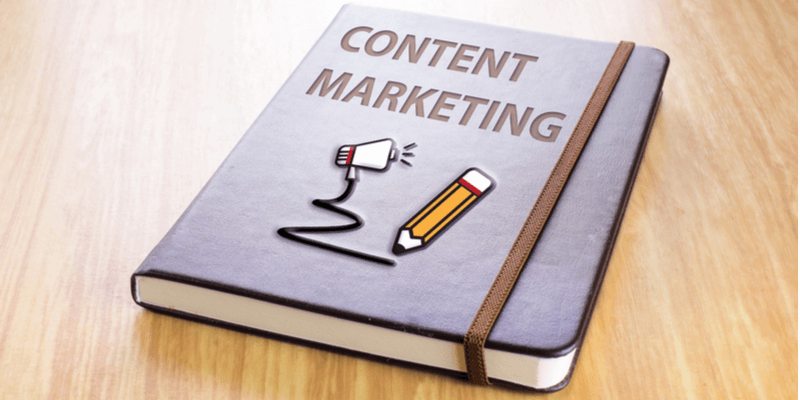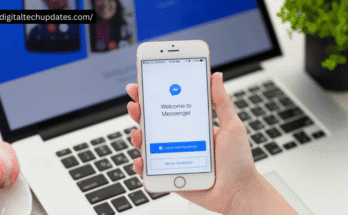Although the idea of content marketing has been around for years, content marketing can be one of the most abused terms in marketing language today. Although many people talk about content marketing lightly, there are considerations that can guide you in content marketing.
If you are an online newspaper that publishes a large amount of content every day, are you a content marketer? If you blog on your website three times a week, are you doing content marketing? If you’ve seriously published a white paper or hosted a webinar frequently, are you doing content marketing?
So what is content marketing?
Content marketing is a process of creating and presenting information in a specific way, aimed at attracting a certain type of visitors, attracting a certain type of potential customers, and limiting the arrival of unwanted customers. But not only this, you must also consider where the recipient of that content is in the sales funnel and speak to them according to that stage.
First of all, content marketing is a set of actions performed in a specific order, designed to create unique and repeatable results. Since content marketing is a process, it can be tracked and measured. And because it’s measurable, it can be continually improved.
Therefore, simply blogging on whatever topic interests you several times a week is not content marketing.
While design, writing, and publishing are important, frequency is, too.Some studiesshow a positive correlation between the frequency of blogging and the number of potential customers on the site. The blog that generates the most leads must be created and published specifically to achieve a positive correlation. Simply generating more content (which can be your conclusion from published statistics) will not make you a content marketer, nor will it help you win customers.
The purpose of the content is very important
Another important part of the definition of content marketing is the objective that the content pursues in the different phases of the sales funnel and in thecustomer journey.
Some of the content is designed to attract visitors, some of the content is designed to attract potential customers and some of the content helps convince visitors to become prospects. The more focused the content in one of these jobs, the more useful the information you gather about how people interact with it. It is a huge challenge to generate content for the different phases of the sales funnel and even if you write well, write according to your buyer persona and do it frequently, if you are not considering the phases of the funnel, you are missing an important component.
For example, if you only write content on general industry topics and never create content on specific brand solutions, you may attract visitors, but you haven’t done much to convert them into leads. Another example is when the content only involves the solutions of your brand and where you only talk about your product all the time, ending up driving away those who either already know you or are not ready to buy at that moment or who, being in a phase research and comparison, they need more product information or solutions.
Product, product, brand, brand, buy, buy content, reads like an ad. The problem is that nobody reads the ad, so this type of content is largely invalid.
Timing is also important
When developing content marketing, the process and the people who use your content may not be in the right moment to consume your content. You may have a lot of inspiration developing it, but that doesn’t mean that your audience receives it with the same passion… the moment you post. However, it does not mean that they are not interested, probably, they are not interested at that time, but later they may be interested.
Therefore, it is important that your content is wellpositioned in search engines, indexed and classified on the Internet, since when your buyer is ready, they will look for information and then, if they find you, they will consume your content.
You have to understand that the needs and interests of your market may be out of sync with your content generation. Obviously, part of the strategic process is to find that the content offer is aligned with the buyer’s need, but this is not always achieved with all precision.
Although the concept of the sales funnel is the general guide, there are new ways to help marketers determine engagement and understand the type of content that needs to be provided at any given time. An easy way is to divide the funnel into three sections. Top, middle and bottom, understand what information the buyer requires in each part of the funnel and develop accordingly.
Contents at the top of the funnel
In the top half of the funnel, you appeal to strangers that you want to convert into visitors, they consume content on general topics related to their industry. Potential customers at the top of the funnel are learning about alternative answers to the problems they encounter.
You are not talking about your brand yet, but about solutions for those who share a certain type of problem. Strangers who haven’t entered the funnel yet are just gathering information. If you provide information, you will attract them. This is important… you are building your reputation.
Content in the middle of the funnel
Continuing with our example … In the middle of the funnel, when the person has already entered your funnel, yes, there you bet on content specifically related to your brand, on the solutions that your brand and product provide. Your way of explaining the product can be online lectures, videos, e-books or more in-depth blog notes… some kind of advanced content, which allows whoever has the problem to identify with the solution. In the middle of the funnel, the prospect is already diving deep into understanding your solution and your products in reference to the problems in which they are particularly interested.
If the prospect has a problem and thinks your solution can work for them, their relationship with you will advance to the next level. Usually it will be when you fill out a capture form on your site or landing page or in your Facebook campaign, from there that stranger, who evolved into a visitor, is now a contact. You know it is a contact when you already have their data and at that moment they are already in the middle of the funnel.
Now the more complex questions begin. Cost, credit, functionality, demo, examples, delivery time, packaging, etc. The content from here is more detailed, more segmented, and more accurate. How potential customers consume the qualified lower half of the funnel will eventually tell your salesperson what to focus on when they decide to talk to the customer. It is normal that, even when they have already provided you with their data, the prospect still wants to receive more content before making a decision and that content is also part of content marketing.
In the middle of the funnel there is already a combination of content that is delivered remotely and that that is delivered by the seller. And yes, content marketing is also what the marketer delivers: your presentation, your brochure, your objection handling letter, your spec sheet, your credit information, etc. Every piece of content that touches the customer in a sales process is part of the content process.
When the prospect becomes a customer is when he advances to the bottom of the funnel and there comes the last phase of content marketing that must keep the product and the brand in the customer’s mind, even if they have already bought. It has several objectives, but the main one is to get the customer to recommend and refer the products and that, when it is time to buy again, they return.
Content below funnel
When the customer has already bought, signed and / or paid, this phase begins. It is when you seek to nurture the customer experience (now we can call you a customer) so that you receive what was offered, with the opportunity and quality you expected. Content that allows you to better use the product or service, that gives you a communication channel and that then exploits your positive experience.
The objective of this phase is to achieve the repetitive purchase of the same customer and to get the satisfied customer to recommend what they bought to others. The continuity of this phase helps the client not to forget the supplier over time. It is common that when a company closes a sale and delivers, it forgets about the customer and turns to new prospects that bring it new sales, however it is important to stay in the mind of that customer so that they do not forget the supplier and, when need them again, come back and buy again, or keep them in mind to recommend them when they detect that someone needs those services or products.




